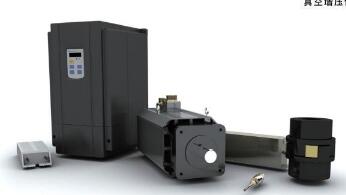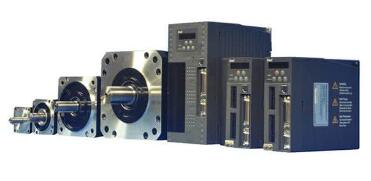The servo system is a mechatronic system and should be designed using a mechatronics method. Servo system design, there is no fixed answer, there is no unified way to get the answer. Different requirements of the servo system can be designed using different methods, resulting in a different structure of the servo system. Even if the servo system is also required, different designers may adopt different design methods and thus obtain different design solutions.
The complexity of the servo system structure determines the complexity of its design process. The design of the actual servo system is very difficult to be successful at the first time, and often it requires repeated modifications and debugging to obtain satisfactory results. The following is a brief introduction to the general steps and methods of servo system design.
The composition of the servo systemThe structure and types of mechatronic servo control system are numerous. However, from the perspective of automatic control theory, the servo control system generally includes five parts: controller, controlled object, execution link, detection link, and comparison link. The figure below shows the block diagram of the servo system.

Figure servo system composition block diagram
1, the comparison
The comparison step is to compare the input command signal with the feedback signal of the system to obtain the deviation signal between the output and the input, usually by a special circuit or computer. 
2, controller
The controller is usually a computer or PID control circuit. The main task of the controller is to transform the deviation signal output by the comparison element to control the actuator to perform the required action.
3, the implementation of links
The role of the execution link is to convert various input energy into mechanical energy according to the requirements of the control signal to drive the controlled object to work. Actuators in mechatronic systems generally refer to various motors or hydraulic and pneumatic servos.
4. The controlled object
5, detection process
The detection link refers to a device that can measure the output and convert it into the dimension needed for the comparison, and generally includes a sensor and a conversion circuit.

1, stability
The stability of the servo system refers to the system. After the disturbance signal on the system disappears, the system can return to its original stable state operation, or the ability to achieve a new stable operating state under the input of the command signal.
The stability requirement is a basic requirement and is the most basic condition for ensuring the normal operation of the servo system. The servo system should be stable within its working range. The stability of the servo system depends on the system structure and the parameters of the components. It can be controlled by various methods provided by the automatic control theory.
2, accuracy
The precision of the servo system refers to the accuracy of the input signal reproduced by its output.
The error of each component in the system will affect the accuracy of the system, such as the sensitivity and accuracy of the sensor, the zero drift and dead zone error of the servo amplifier, the backlash and transmission error in the mechanical device, and the nonlinear factors of each component. Reflected in the servo system _ will show the dynamic error, steady-state error and static error, the servo system should reach a given accuracy under relatively economic conditions ^
3, quick response
Fast response refers to the ability of the system output to quickly follow the input command signal change. It mainly depends on the system damping ratio and natural frequency can improve the rapid response, but has an adverse effect on the stability of the system and the maximum overshoot, so When designing the system, both should be optimized to make the output response speed of the system as fast as possible.
4, sensitivity
Changes in the parameters of various components of the system will affect the performance of the system. The sensitivity of the system to these changes is small, that is, the performance of the system should not be affected by the change of parameters. The specific measures are: for open-loop systems, the components should be selected strictly; for closed-loop systems, the selection criteria for the components in the output channels can be appropriately relaxed, and the components of the feedback channel must be carefully selected to improve the sensitivity of the system.

First, design requirements analysis, system design
First analyze the design requirements of the servo system, specify its application occasions and objectives, basic performance indicators and other performance indicators, and then draw up several technical solutions according to the existing technical conditions. After evaluation, comparison, select a more reasonable solution .
The design of the plan should include the following contents: selection of control mode; selection of actuators; selection of sensors and detection devices; selection of mechanical transmission and actuator selection. The design of the plan is the first step in system design. The selection of each component is only preliminary, but it must be further revised and determined in the detailed design stage.
Second, system performance analysis
After the design of the scheme, although the specific structural parameters have not yet been determined, the basic performance should be firstly analyzed based on the basic structure.
First draw the system block diagram, list the approximate transfer function of the system, and simplify the transfer function and block diagram (generally should be simplified to second-order systems), and then on this basis, preliminary analysis of the system stability, accuracy and rapid response Analysis, the most important of which is the stability analysis, if you can not meet the design requirements, you should consider modifying the program or adding corrections.
Third, the choice of actuators and sensors
The design of the program is only a preliminary selection of actuators and sensors. This step should be based on the specific speed, load and accuracy requirements to determine the parameters and model of the actuator and sensor.
Fourth, mechanical system design
The mechanical system design includes the design of the specific structure and parameters of the mechanical transmission mechanism and the actuator. During the design, attention shall be paid to eliminating various transmission gaps, increasing the rigidity of the system as much as possible, reducing the inertia and friction, especially when designing the guide rail of the actuator. Produce a "crawling" phenomenon.
V. Control System Design
The control system did not include detailed design of signal processing and amplification circuits, calibration devices, servo motor drive circuits, etc. If computer digital control was used, it should also include interface circuit and controller algorithm software design. The control system design should pay attention to the selection of various parameters and the matching of mechanical system parameters, so that the system has enough stability margin and fast response, and meet the accuracy requirements.
Sixth, system performance review
After all the structural parameters are determined, the system's exact transfer function can be re-listed. However, the actual servo system is generally a high-order system. Therefore, proper simplification should be performed before performance review can be performed. After review, if it is found that the performance is not ideal, you can adjust the parameters of the control system or modify the algorithm, or even re-design until satisfactory.
Seventh, system test experiment
The above design and analysis are still in the theoretical stage. The performance of the actual system needs to be determined through test experiments. The test experiment can be performed on a model experiment system or on a prototype machine. Through testing experiments, you will often find some problems and must take measures to solve them.
VIII. Finalization of system design
After the above seven steps and the repeated satisfaction of the above seven steps, the design plan can be determined, and then the technical documents such as the design drawings and design calculation specifications can be organized and put into formal production.

Kosta Small Power Generator,Home Use Power Generator,Kosta Air Cooled Portable Diesel Generaor,Kosta Small Power Generator Set
Shanghai Kosta Electric Co., Ltd. , https://www.generatorkosta.com